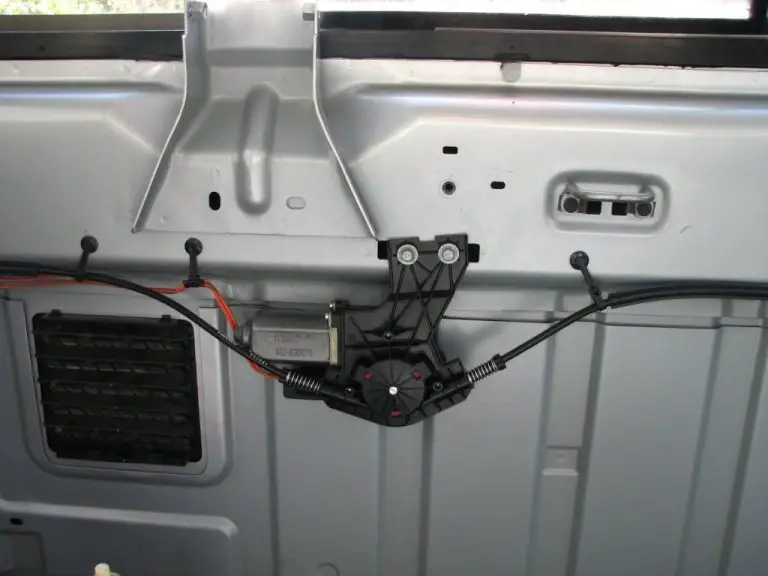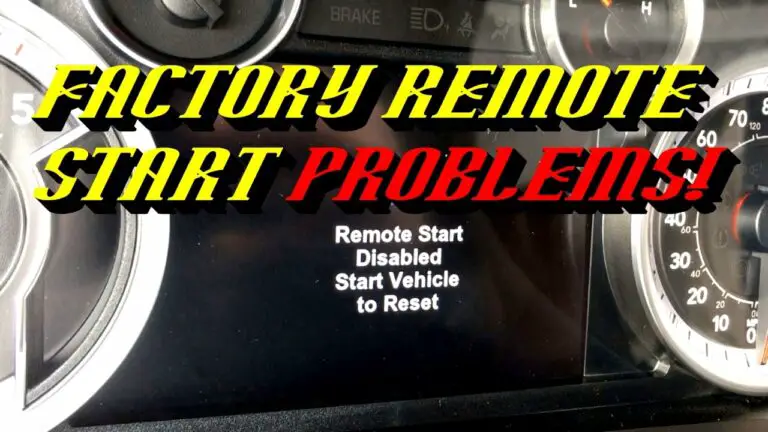Effortless Dodge Ram 1500 Limp Mode Reset in Minutes
Limp mode is a safety feature designed to protect your vehicle from further damage. However, it can also be a major inconvenience, especially when driving a Dodge Ram 1500. Addressing and resolving limp mode issues is crucial, as it ensures that your vehicle continues to run optimally and safely. Ignoring the problem can lead to more severe issues and costly repairs down the line.
This comprehensive guide aims to help Dodge Ram 1500 owners understand the limp mode phenomenon, its causes, and how to perform a reset. With detailed instructions, preventative measures, and troubleshooting tips, you’ll be better equipped to handle limp mode situations and keep your truck in top condition.
Symptoms of limp mode in Dodge Ram 1500
When your Dodge Ram 1500 enters limp mode, you may experience some of the following symptoms:
Reduced engine power: The engine’s performance is significantly limited, resulting in lower speeds and sluggish acceleration.
Transmission issues: Gear shifting may become difficult, or the vehicle may be stuck in a single gear.
Warning lights: Check the engine, transmission, or other warning lights that may illuminate your dashboard.
Poor fuel efficiency: Limp mode can cause decreased fuel efficiency due to the engine’s reduced performance.
Unusual noises: You may hear strange sounds from the engine or transmission as the vehicle struggles to operate in limp mode.
If you notice any of these symptoms, it’s essential to diagnose and address the underlying issue before attempting a limp mode reset.
Causes of Limp Mode in Dodge Ram 1500
Common triggers
The limp mode can be activated by various issues affecting your Dodge Ram 1500’s engine, transmission, or other critical systems. Some common triggers include:
- Sensor malfunctions: Faulty sensors, such as the throttle position sensor, mass airflow sensor, or oxygen sensor, can send incorrect data to the engine control module (ECM), causing the limp mode to activate.
- Transmission problems: Issues with the transmission, including solenoid failures or fluid leaks, can trigger limp mode to protect the vehicle from further damage.
- Engine overheating: An overheating engine can cause the ECM to activate limp mode to prevent additional damage and potential engine failure.
- Low fluid levels: Low levels of vital fluids, such as engine oil or transmission fluid, can trigger limp mode to protect the engine and transmission from damage due to insufficient lubrication or cooling.
- Electrical issues: Faulty wiring or a failing ECM can cause the vehicle to enter limp mode as a protective measure.
Diagnosing the issue
To diagnose the root cause of limp mode in your Dodge Ram 1500, follow these steps:
- Check for warning lights: Warning lights on your dashboard can provide clues to the underlying issue causing limp mode.
- Use an OBD2 scanner: Connect an OBD2 scanner to the vehicle’s diagnostic port and retrieve any stored trouble codes. These codes can help you pinpoint the issue causing limp mode.
- Inspect for visible issues: Perform a visual inspection of the engine bay and undercarriage for any signs of damage, leaks, or loose connections.
- Consult a professional: If you’re unable to diagnose the issue yourself, seek the assistance of a qualified mechanic to identify and fix the problem.
Once you’ve diagnosed and resolved the issue causing limp mode, you can proceed with the reset process.
Dodge Ram 1500 Limp Mode Reset: Step-by-Step Guide
Preparation for the reset process
Before attempting a limp mode reset, ensure that you’ve addressed the underlying issue causing your Dodge Ram 1500 to enter limp mode. Proceed with the reset only after you’ve confirmed that the problem has been resolved.
- Park your Dodge Ram 1500 on a level surface and engage the parking brake.
- Turn off the engine and remove the key from the ignition.
- Gather the necessary tools, such as an OBD2 scanner, to perform the reset.
Performing the Reset: A Detailed Guide
Follow these detailed steps to reset limp mode on your Dodge Ram 1500:
Locate the diagnostic port
Find the diagnostic port, also known as the OBD2 port, in your Dodge Ram 1500. This port is usually located under the dashboard on the driver’s side, near the steering column, or close to the center console. It is a 16-pin connector that provides a direct link to your vehicle’s engine control module (ECM) for diagnostics and reset procedures.
Plug in the OBD2 scanner
Once you’ve located the diagnostic port, plug your OBD2 scanner into it. Ensure that the connection is secure and the scanner is properly seated. This connection will allow the scanner to communicate with your vehicle’s ECM and perform various diagnostic tasks, including resetting limp mode.
Turn the ignition key to the “ON” position
With the OBD2 scanner connected, turn the ignition key to the “ON” position without starting the engine. This powers up your vehicle’s electrical systems and enables the communication between the OBD2 scanner and the ECM.
Navigate to the “Reset” or “Clear Codes” function
Power on the OBD2 scanner and follow the on-screen prompts to navigate its menu. Locate the “Reset” or “Clear Codes” function, which allows you to clear stored trouble codes and reset the system. This process may vary depending on the specific OBD2 scanner model you’re using, so refer to the user manual for detailed instructions.
Clear the trouble codes and reset the system
Select the option to clear the trouble codes and reset the system. The OBD2 scanner will send a command to your vehicle’s ECM, instructing it to erase the stored trouble codes and exit limp mode. Wait for the scanner to confirm that the codes have been cleared and the reset process is complete.
Unplug the OBD2 scanner and turn off the ignition
Once the reset process is complete, unplug the OBD2 scanner from the diagnostic port and turn off the ignition. This step is essential for ensuring that the reset procedure is properly finalized.
Wait for 5-10 minutes before starting the engine
After disconnecting the OBD2 scanner and turning off the ignition, wait for 5-10 minutes before starting the engine. This waiting period allows the ECM to recalibrate and fully exit limp mode.
Start the engine and observe the vehicle’s performance
Start the engine and carefully observe your Dodge Ram 1500’s performance. Check for any warning lights on the dashboard and note whether the vehicle is operating normally, without any signs of limp mode. If the warning lights have disappeared and the vehicle is functioning as expected, the limp mode reset has been successful.
Consult a professional mechanic if the issue persists
If the limp mode persists even after following these detailed steps, there may still be an unresolved issue with your vehicle. In this case, it is crucial to consult a professional mechanic for further assistance.
They can perform a more in-depth diagnosis and provide the necessary repairs to resolve the issue and ensure the safety and performance of your Dodge Ram 1500.
Troubleshooting Persistent Limp Mode Issues
Recurring limp mode problems
If your Dodge Ram 1500 continues to experience limp mode issues even after you’ve reset the system and addressed the underlying cause, there may be additional problems that need to be resolved. Common reasons for recurring limp mode issues include:
- Multiple underlying issues: There may be more than one problem causing limp mode, and you might have only resolved one of them.
- Incorrect repair: The initial repair may not have been performed correctly or completely, causing the issue to persist.
- New problems: New issues may have developed since the initial repair, triggering limp mode once again.
When to seek professional help
If you’ve tried resetting the limp mode and troubleshooting potential causes but continue to experience issues, it’s time to seek professional help. A qualified mechanic can perform a thorough diagnostic check, identify the root cause, and provide the necessary repairs to ensure your Dodge Ram 1500 operates safely and efficiently.
Don’t ignore persistent limp mode problems, as they can lead to severe damage and costly repairs if left unaddressed.
Preventing Limp Mode in Your Dodge Ram 1500
Regular maintenance tips
To minimize the chances of your Dodge Ram 1500 entering the limp mode, follow these regular maintenance tips:
- Change engine oil and filter at recommended intervals to ensure proper lubrication and cooling of the engine.
- Check and replace transmission fluid as needed to maintain the health of the transmission system.
- Inspect and replace any worn or damaged belts, hoses, and other components as necessary.
- Monitor fluid levels, such as coolant, brake fluid, and power steering fluid, and top off as needed.
- Replace air filters and clean the mass airflow sensor to maintain optimal engine performance.
- Regularly check and replace spark plugs and ignition coils to ensure a smooth-running engine.
- Address any warning lights or unusual noises promptly to prevent further issues from developing.
Monitoring your vehicle’s performance
Keeping a close eye on your Dodge Ram 1500’s performance can help you detect and address issues before they escalate to the point of triggering limp mode. Pay attention to any changes in performance, such as sluggish acceleration, rough idling, or decreased fuel efficiency, and address them promptly to maintain your vehicle’s health.
Limp Mode Reset Tools and Devices
OBD2 scanner usage
An OBD2 scanner is an essential tool for diagnosing and resetting limp mode in your Dodge Ram 1500. It allows you to read and clear trouble codes, monitor vehicle performance and reset the system to exit limp mode once the underlying issue has been resolved.
Choosing the right tool for your Dodge Ram 1500
When selecting an OBD2 scanner for your Dodge Ram 1500, consider factors such as compatibility, ease of use, and additional features. Some scanners offer advanced diagnostic capabilities and real-time monitoring, while others provide basic code reading and clearing functionality. Choose a tool that meets your needs and budget.
Safety Tips During Limp Mode Reset
Proper handling of electronic components
When working with electronic components, such as the OBD2 scanner, ensure that you handle them with care to prevent damage to your vehicle’s electrical system. Avoid exposing the scanner or other electronic devices to moisture, extreme temperatures, or excessive force.
Staying safe on the road
If your Dodge Ram 1500 enters limp mode while driving, prioritize safety by pulling over as soon as it is safe to do so. Avoid driving at high speeds or in heavy traffic, as the reduced performance can create hazardous situations. Seek professional help to resolve the issue and exit limp mode before resuming normal driving.
Frequently Asked Questions about Dodge Ram 1500 Limp Mode Reset
How long can I drive in limp mode?
Can I reset limp mode without fixing the issue?
Does disconnecting the battery reset limp mode?
Conclusion
In summary, resolving limp mode issues in your Dodge Ram 1500 involves diagnosing and addressing the underlying problem, performing a limp mode reset using an OBD2 scanner, and taking preventative measures to minimize the chances of the issue recurring. Regular maintenance and monitoring of your vehicle’s performance are crucial for maintaining its health and avoiding limp mode situations.
Addressing and preventing limp mode issues in your Dodge Ram 1500 is essential for ensuring your vehicle’s safety, performance, and longevity. Ignoring or improperly handling limp mode situations can lead to severe damage and costly repairs.
By following the guidance provided in this comprehensive guide, you can confidently tackle limp mode challenges and keep your truck running smoothly.





